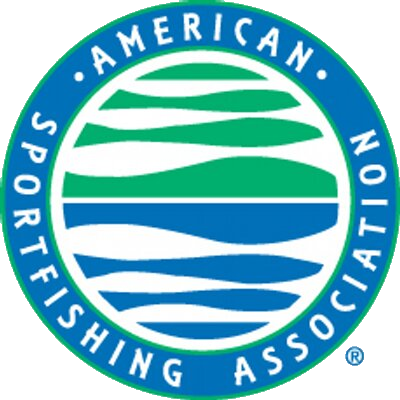Offshore Wind Energy (OWE) development has rapidly expanded with almost 50 leased projects Nationwide. Increased renewable energy standards at both the state and federal levels are fueling continued investments in OWE.
The Atlantic region continues to lead OWE, but recent lease sales along both the Gulf of Mexico and the West Coast demonstrate the national scope of this evolving issue. OWE technology has focused on shallower fixed turbine installations because they’re secured directly into the seabed. However, with roughly two-thirds of the Nation’s OWE potential existing over deep water, there is significant motivation to advance floating OWE technology - where turbines are on floating platforms anchored to the seabed with cables. The considerations articulated in our initial position statement are readily adaptable to floating OWE applications (see Appendix A). Furthermore, ASA plans to continue to update these considerations to align with advancements in floating OWE technology. In the interim, this update focuses on the need to revisit the OWE stakeholder engagement model.
Since ASA’s initial position statement in July 2019, the working relationship between the recreational fishing community, OWE developers, and state and federal permitting agencies has reached an all-time low. Wind is a widely available renewable resource, so there's absolutely no excuse for neglecting stakeholder engagement and feedback when developing offshore wind energy (OWE) responsibly. We urge state and federal permitting agencies and OWE developers to revisit the stakeholder engagement model to make it more meaningful and impactful to achieve promises of co-existence between these two industries. We offer the following recommendations as opportunities to advance this goal.
Recommendations:
- The Bureau for Ocean Energy Management (BOEM) must enhance its communication and outreach materials for stakeholders in the OWE process. We suggest consulting the Atlantic States Marine Fisheries Commission’s website for information organization ideas.
- The Bureau for Ocean Energy Management must establish clear guidance and permitting criteria that mandate OWE developers to comprehensively assess recreational fishing activity within lease areas.
- BOEM, NOAA Fisheries and OWE developers must establish research priorities and partner with the recreational industry to systematically gather and analyze spatially and temporally explicit data on recreational fishing activity (i.e., private and for hire) within leases instead of relying on existing datasets (e.g., Marine Recreational Information Program) that are insufficient to meet recommendation 2.
- BOEM must require OWE developers to establish a formal independent mediation process that works to resolve disagreements between the recreational fishing community and OWE developers on all topics and through all phases of OWE development, otherwise, it’s clear these projects will likely be brought to litigation as has already occurred.
- NOAA Fisheries must provide resources to the regional fishery management councils to establish an OWE Council Committee and Advisory Panel to better align OWE development with the federal/state fishery management process.
Appendix A: Considerations for OWE development from ASA’s July 2019 position statement.
Access Plan — the area around the wind energy infrastructure (e.g., turbines, transmission cable runs) are governed by the United States Coast Guard and the developers. To ensure maximum fishing access, ASA recommends,
- that recreational fishing access near wind energy infrastructure be allowed to the maximum extent possible.
- the developers create an access plan that clearly documents the allowable use at all stages of the project (pre-construction, construction, operation and deconstruction).
- the developers form an access plan committee that includes representation from the recreational fishing and boating community.
- if access must be restricted for safety reasons, we recommend those restrictions do not overlap with established fishing seasons.
Monitoring Plan — there are many unknowns regarding how OWE projects will impact the ecosystem including, but not limited to, fish distribution and abundance, habitat availability, and recreational and commercial fisheries. ASA recommends,
- coordinating with scientific advisors from industry, state and federal agencies and academic institutions to establish standardized survey designs during all phases of the project and across all seasons.
- coordinating across adjacent lease areas to establish comprehensive monitoring plans that enable the analysis of cumulative impacts.
- providing a clear process for the involvement of stakeholder groups including the recreational fishing and boating community.
- using existing survey data where applicable.
Construction and Operations Plan — engagement with recreational fishing stakeholders is essential to minimizing impacts during the construction and operation phase of the project. ASA recommends,
- establishing transit lanes to ensure safe navigation between inshore fishing ports and offshore fishing grounds.
- siting and spacing the turbines to minimize impacts to known fishing grounds and allow safe drift fishing and maneuvering when fishing for large pelagic fish species.
- establishing optimal construction times that avoids existing fishing seasons.
- using foundation and scour pads that maximize available habitat to fishes.
- transmission cable runs that avoid areas of essential fish habitat and are buried at a depth that eliminates electromagnetic field impacts.
- decommission plans that fully consider the importance of wind energy infrastructure to the environment and ecosystem.
Mitigation Plan — the associated economic impacts on the recreational fishing industry from OWE are largely unknown. We recommend a comprehensive mitigation plan that accounts for all known and unknown impacts. ASA recommends,
- creating mitigation programs that offset impacts of OWE on the recreational fishing community through supplemental funding to state artificial reef programs, support of stock assessment surveys, recreational fishing and boating infrastructure, and other efforts that support recreational fishing and the marine resources.
- working with state and federal agencies to develop bond criteria to be required of all offshore wind facilities to ensure that adequate financial resources are available to offset any unforeseen impacts during the lifetime of the projects.
